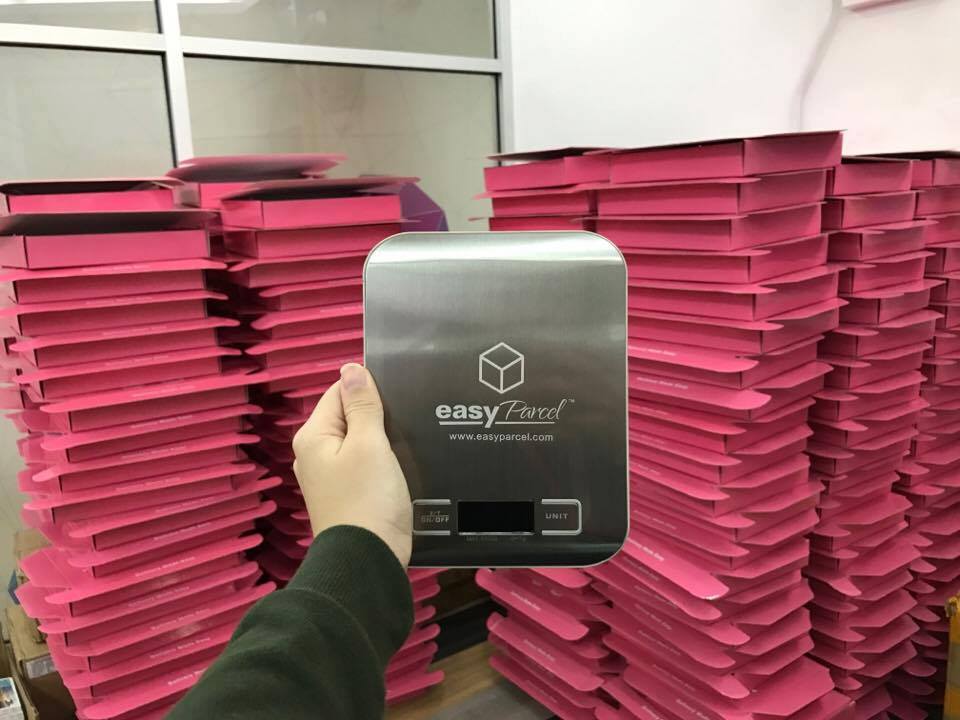 DagangNews.com
DagangNews.comThe Basics of E-Commerce Shipping Integration and Why Your Business Needs It
By Clarence Leong
Founder & CEO of EasyParcel

IT’S no surprise that e-commerce in Malaysia experienced an unprecedented surge since the COVID-19 pandemic marked its arrival in the country. People shifted their commercial behaviours online when they couldn’t leave their homes and the Shop Malaysia Online campaign was recently implemented to stimulate online consumption and aid economic recovery.
I’m a big advocate of all things digital. It was welcome news to me that online shopping became everyone’s go-to avenue for their retail needs. And it wasn’t welcome news to only me. Business owners saw the boost in e-commerce participation and the support from the government’s National Economic Recovery Plan (PENJANA) as an indicator to step up their game.
The new norm of e-commerce and digitalisation is prime time for online businesses to thrive. The Shop Online Malaysia initiative generated over RM896 million in sales after running for just two months between 1 August to 30 September 2020, benefitting more than 7.8 million consumers and over 210,000 Malaysian sellers nationwide. These figures are proof of our healthy appetite for e-shopping and any business would be kidding themselves if they said they weren’t interested to be a part of it.
As the industry grows, online businesses need to stay on their feet and consistently improve their fulfilment departments to accommodate what customers want. We’ve read those announcements from courier companies that deliveries are expected to be delayed due to large volumes of parcels. Naturally, alongside this uptick of online shopping came the uptick of consumer complaints. Hence, it is crucial for these businesses to put in place a well-planned shipping strategy to guarantee customer satisfaction.
Shipping is an integral component of your business - what is the point of having a great product if your customers can’t enjoy it in person? Keep in mind, however, that an improperly defined shipping strategy can greatly add to the expenses of your business. For larger companies, that cost may be recoverable within a shorter period of time. For micro, small and medium enterprises (MSMEs), those expenses could be the setback to long-term profitability and sustainability.
Additionally, hastily setting up a poorly thought-out shipping solution may be detrimental to your customers’ satisfaction, which in turn affects customer retention. A study released in September this year by Blackbox Research and Toluna revealed that 43% of Malaysian consumers are unsatisfied with their e-commerce experience.
Their top 3 concerns? Product prices, delivery time and cost of delivery. Consumer behavior has changed over the past nine months since the Movement Control Order (MCO) was first implemented this past March. They are now more mindful and selective of their purchases, with high expectations of the service provided by businesses to deliver the products.
When my team and I started EasyParcel in 2014, our intention was to simplify the process of delivery bookings. You wouldn’t need to go to the post office and line up to send out your parcels, or list out the shipping fees of various couriers to figure out which is the most cost-effective. But as simplified as a process is, it’s rather useless if the users who need it most don’t use it efficiently or at all.
A shipping strategy is a must in the success of your business, and that solution requires shipping integration. By mapping out a strategic shipping solution, your business will be able to reduce costs, increase conversions, retain customers and even expand its market as your products are accessible to a larger group of people.
So, how exactly do you go about planning your shipping strategy? My advice is to consider these three aspects to form its foundation:
- How your products are shipped
- How your products are packaged
- How heavy your products weigh
How your products are shipped
Decide on the pricing strategy for shipping. A popular shipping option is charging a flat rate. This works best when your range of products are of similar sizes and weights because you really wouldn’t want to complicate your pricing strategy and subsequently undercharge or overcharge your customers.
Another well-known shipping option is the ‘free shipping’ offering, but you know as well as I do that technically it’s not free. Either your business pays for it out of your profit margins, your customers indirectly pay for it by buying your products or a combination of both.
The most important thing to do here is to pay careful attention to your margins. If you are bearing the cost of shipping, take note of the small-value amounts (like the box that costs RM1.00 and bubble wrap that costs RM2.50) as these can very quickly add up and eat away at your profits. If you opt for your customers to indirectly pay, you need to ensure that the prices of your products are not exorbitantly increased so as to not alienate your customer base.

How your products are packaged
A solid shipping strategy is an effective point of differentiation for your business. That includes product packaging, which can be an extension of your brand. Decorative elements, or lack thereof, contributes to how customers perceive your brand and how they feel about it. Like I mentioned earlier, consumers are more discerning and have higher expectations. This applies to the way their purchases are presented to them. Why do you think unboxing videos have gained so much attention over the years? It’s part of the e-commerce experience. It makes the customers believe that the price they paid is worth it and heightens their satisfaction.
I should note that packaging can get tricky. You need to be aware of the cost of the packaging materials as well as the weight of the final packaged product. What I would advise is to explore every option of packaging available. If you sell clothes, you don’t have to use structured packaging like a box. If you sell phone cases, you can use padded envelopes to keep the overall product light and small. Depending on your product range, I recommend having a variety of packaging sizes and materials on hand.
How heavy your products weigh
It goes without saying that the heavier your products, the more it costs to ship them to your customers. Wherever possible, minimise excessive packaging to avoid adding even more weight to your items. To make it easier for you when planning your shipping strategy, I suggest weighing each of your products and regularly updating that information.
But don’t just weigh the actual weight, consider the volumetric weight as well. This is a detail that e-commerce sellers commonly overlook in calculating their delivery costs. For example, the actual weight of a pack of toilet roll is 2kg. The volumetric weight, however, is 10.8kg based on the 60cm x 30cm x 30cm measurements of the pack. Courier companies charge according to the heavier weight, therefore the final charge applies to the 10.8kg and your costs would actually be 5 times more than you had originally calculated.
Keeping track of the volumetric and actual weight of your products allows you to have a clearer idea of what your total costs are. Furthermore, you can display these weights on your website and alert your customers about it.
The biggest takeaway here is to give as much weight to shipping as you would any other part of your business; it’s the final step before your customers receive your products and you wouldn’t want them to grumble about how long it took for their purchase to get to them.
Remember that the key to your customers coming back to you is excellent customer satisfaction. That could be done through next-day delivery, free shipping or thoughtful packaging. Setting the right expectation of your customers on the duration of delivery is necessary as well and it is your chance to under-promise and over-deliver.
In whatever manner you aim to achieve that, it’s essential to examine the foundation of your shipping solution. Once you’ve factored in your products’ packaging, weights and postage method, you’re well on your way to creating your strategy. - DagangNews.com



